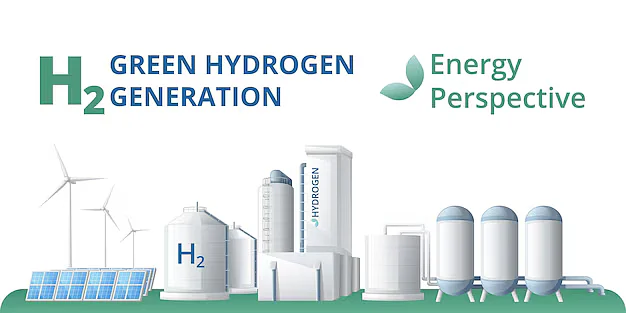A new study by Engineers India Ltd. (EIL) has found that up to 5 percent green hydrogen can be safely blended with piped natural gas. This discovery offers significant potential for reducing India's fossil fuel dependency and advancing its green energy goals.
As India continues its green energy transition, the blending of green hydrogen with piped natural gas (PNG) could become a key component. Initial findings from a study led by Engineers India Ltd. (EIL) indicate that blending 3-5 percent green hydrogen with PNG can be achieved without compromising pipeline infrastructure, marking a significant step forward in India's clean energy efforts.
Advertisement
EIL, in collaboration with IIT Kanpur, is conducting an extensive study to examine the impact of green hydrogen on the city gas distribution (CGD) network. According to a senior government official, the preliminary results have been submitted to the Ministry of Petroleum and Natural Gas (MoPNG), confirming that such a blend is feasible without adverse effects on the existing infrastructure.
This development is crucial for India, the world’s third-largest energy consumer, as it could help reduce dependence on fossil fuel imports. With India currently importing about half of its natural gas needs as liquefied natural gas (LNG), blending green hydrogen presents an opportunity to cut costs and bolster energy security. In FY24, India consumed 66.63 billion cubic metres (BCM) of natural gas, a rise from the 59.97 BCM in FY23 and 64.16 BCM in FY22.
Advertisement
Green hydrogen, produced through renewable energy and water electrolysis, stands in contrast to grey hydrogen, which is derived from methane and emits greenhouse gases. Green hydrogen is a versatile energy carrier, suitable for various applications, including transportation and renewable energy integration. However, its use is not without challenges, particularly concerning pipeline safety.
A 2013 study by the US Energy Department’s National Renewable Energy Laboratory (NREL) highlighted risks associated with hydrogen embrittlement—a phenomenon where hydrogen can weaken metal or polyethylene pipelines, increasing leakage risks, especially in high-pressure systems. The EIL study aims to assess these risks in India's context.
Several public sector companies are already running pilot projects to test green hydrogen blending. NTPC, a state-run entity, launched a project at Kawas in Gujarat, blending 5 percent green hydrogen with PNG. By December 2023, the blend was increased to 8 percent, demonstrating the potential for scaling up.
Similarly, GAIL launched a pilot project in partnership with HPCL at Avantika Gas, initially blending 2 percent hydrogen with PNG, later increasing it to 5 percent after March 2023. GAIL also commissioned its first green hydrogen production plant in Vijaipur, Madhya Pradesh, with a capacity of 1.4 kilotonnes per annum (KTPA). The hydrogen produced will be used as fuel in existing natural gas processes and for retail customers in nearby areas.
In a broader move to support green hydrogen growth, the government is exploring the feasibility of transporting green hydrogen through natural gas pipelines. A team from GAIL, Indian Oil Corporation (IoCL), NTPC, and the Central Electricity Authority (CEA) is studying the cost and reliability of moving green hydrogen from renewable energy zones (REZs) to key ports for domestic use and export. An initial assessment of transporting hydrogen from Rajasthan to Paradip Port in Odisha has already been conducted.
Advertisement
The Petroleum and Natural Gas Regulatory Board (PNGRB) is also looking into using existing natural gas transmission lines to transport green hydrogen, which could further reduce costs and accelerate adoption. India’s annual hydrogen demand currently stands at 6 million tonnes, about 6 percent of global demand.
As India moves towards a cleaner, greener energy future, the ability to blend and transport green hydrogen will play a pivotal role in reducing the country’s reliance on fossil fuels while meeting its sustainability targets.















 Just one email a week
Just one email a week